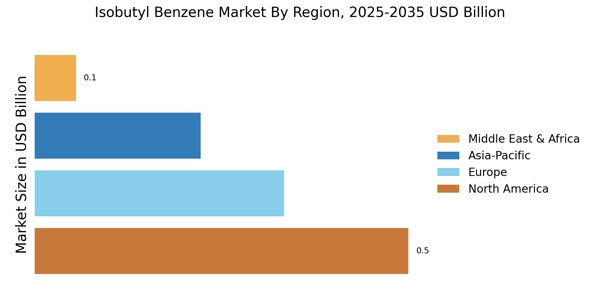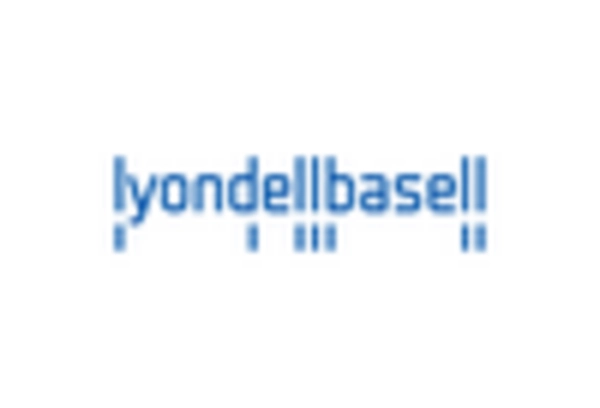Expansion of Automotive Sector
The automotive sector's expansion is significantly influencing the Isobutyl Benzene Market. As the demand for lightweight and durable materials increases, isobutyl benzene is becoming a preferred choice for producing various automotive components. The automotive industry is projected to witness a growth rate of around 3.8% annually, which could lead to a corresponding rise in the consumption of isobutyl benzene. This trend is driven by the need for improved fuel efficiency and reduced emissions, prompting manufacturers to adopt advanced materials. Consequently, the isobutyl benzene market is likely to benefit from this upward trajectory, as automotive manufacturers increasingly rely on its properties to enhance vehicle performance and sustainability.
Growth in Pharmaceutical Applications
The pharmaceutical sector is emerging as a significant driver for the Isobutyl Benzene Market. Isobutyl benzene is utilized in the synthesis of various pharmaceutical compounds, which are essential for developing new medications. The pharmaceutical industry has been experiencing robust growth, with an estimated annual growth rate of 5.2% projected over the next few years. This growth is attributed to the increasing prevalence of chronic diseases and the rising demand for innovative therapies. As pharmaceutical companies continue to invest in research and development, the demand for isobutyl benzene is expected to rise, further solidifying its position within the market. The integration of isobutyl benzene in drug formulation processes highlights its importance in the pharmaceutical landscape.
Rising Demand in Chemical Manufacturing
The Isobutyl Benzene Market is experiencing a notable increase in demand due to its essential role in the production of various chemicals. As industries such as plastics, resins, and synthetic rubber expand, the need for isobutyl benzene as a precursor becomes more pronounced. Recent data indicates that the chemical manufacturing sector is projected to grow at a compound annual growth rate of approximately 4.5% over the next five years. This growth is likely to drive the demand for isobutyl benzene, as manufacturers seek to enhance production efficiency and meet the rising consumer needs. Furthermore, the versatility of isobutyl benzene in producing high-performance materials positions it as a critical component in the evolving landscape of chemical manufacturing.
Surge in Demand for Specialty Chemicals
The Isobutyl Benzene Market is witnessing a surge in demand for specialty chemicals, which are increasingly utilized across various applications. Specialty chemicals, known for their unique properties and functionalities, are essential in sectors such as agriculture, electronics, and personal care. The specialty chemicals market is anticipated to grow at a rate of approximately 5% annually, driven by the need for innovative solutions in diverse industries. Isobutyl benzene serves as a vital ingredient in the formulation of these specialty chemicals, thereby enhancing its market potential. As industries continue to seek high-performance materials, the reliance on isobutyl benzene is likely to increase, positioning it as a key player in the specialty chemicals segment.
Technological Innovations in Production Processes
Technological innovations in production processes are playing a crucial role in shaping the Isobutyl Benzene Market. Advances in manufacturing techniques, such as improved catalytic processes and enhanced separation technologies, are enabling more efficient production of isobutyl benzene. These innovations not only reduce production costs but also minimize environmental impact, aligning with the growing emphasis on sustainability. The implementation of cutting-edge technologies is expected to enhance the overall yield and quality of isobutyl benzene, making it more attractive to manufacturers. As the industry adapts to these technological advancements, the market for isobutyl benzene is likely to expand, driven by the need for more efficient and eco-friendly production methods.


















Leave a Comment